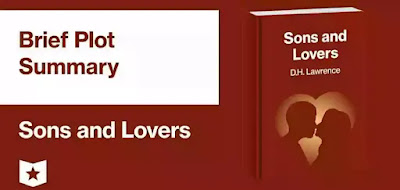Also Read
Summary
Sons and Lovers is an outstanding novel written by D. H. Lawrence in 1913. It is the most notable autobiographical novel of the century. Gertrude Morel, of a upper-middle-class family fallen in fortune, is married to the coarse miner Walter Morel. The children turn to her especially the sensitive Paul (Lawrence) who has a talent for painting. Encouraged to education and social climbing by his mother, Paul becomes a factory clerk. Miriam Leivers, a charming and affectionate girl encourages Paul's artwork but cannot woo him away from his mother's fixation. He has a passionate relationship with Clara Dawes, a factory worker estranged from her husband; the puritanical Mrs. Morel condones the affair because Paul will not be taken from her. His mother's death is heartbreaking to Paul, but he resolves to remake his life.
The novel is great for its realism and for the philosophy it exemplifies. Paul is caught in an obvious Oedipal situation. As the son-lover he cannot bring fulfillment to himself or his mother, in striving for a normal relationship Paul is a split being, seeking spiritual attachment in Miriam and physical attachment in Clara. This inability to function as an integrated man is seen by Lawrence as the sterility of today's industrialized society.
Critical Analysis
The outward form of Lawrence's novel Sons and Lovers is traditional but the experimental quality lies in an unprecedented search for the inner reality. Lawrence probes inwardly for feelings that are seldom expressed. He treats his theme in an impassioned manner giving to it all the vitality, vigor, and force of which he was capable.
Sons and Lovers are largely autobiographical. The plot is firmly knit, the characters are round characters - seen from the outside and from within. It has a realistic description of life in the mining village in which Lawrence was born. The subtlety of Lawrence's insight into the psychology of the emotionally possessive mother is nowhere better shown than in the study of the conflict between Miriam and Mrs. Morel for the soul of the younger son, Paul.
